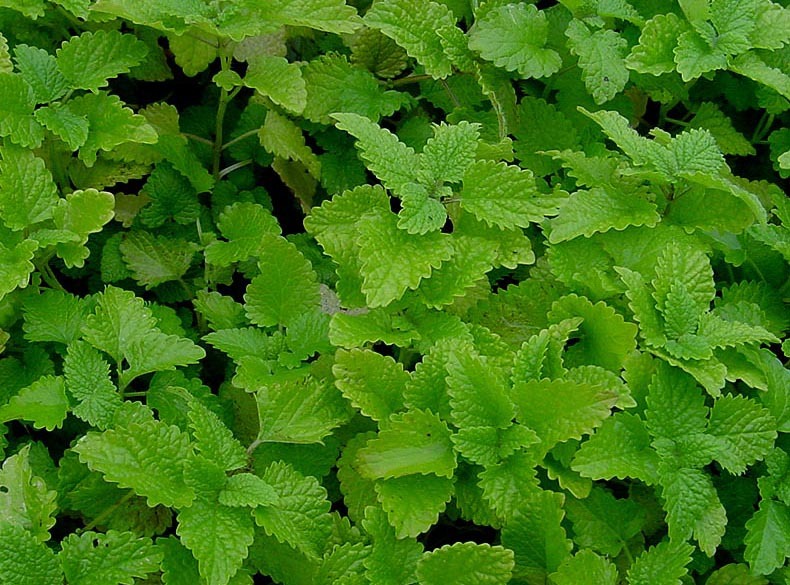9.15.09 It's the Balm

Lemon Balm Panna Cotta
- — vegetable oil
- — 2 cups gently packed lemon balm leaves
- — 3 tablespoons fresh lemon juice
- — 1/2 cup sugar
- — pinch sea salt
- — 1 1/4 ounce envelope unflavored gelatin
- — 1 1/2 cups heavy cream
- — 1 1/2 cups whole milk
Lightly oil six 8- or 12-ounce ramekins. Place lemon balm in a mixing bowl and sprinkle with lemon juice, sugar and salt. Stir to combine, and allow to sit for 20 minutes. Meanwhile, place 3 tablespoons cold water in a small bowl and sprinkle with gelatin; allow to soften for 10 minutes.
Add cream to lemon balm and stir, gently crushing leaves. In a medium saucepan, heat milk just until steaming, then add gelatin mixture and remove from heat. Stir until gelatin is dissolved, about 2 minutes.
Place a fine-mesh strainer over saucepan and pour in lemon balm mixture. Press hard on leaves to strain out all the liquid, then discard leaves. Stir liquid, then distribute evenly among ramekins. Place in refrigerator until chilled and solid, at least four hours. After 4 hours, ramekins may be covered and refrigerated for up to 2 days.
To serve, dip each ramekin in hot water and invert to release panna cotta onto a plate. Serve immediately.
 Download Recipe
Download Recipe






0 Comments